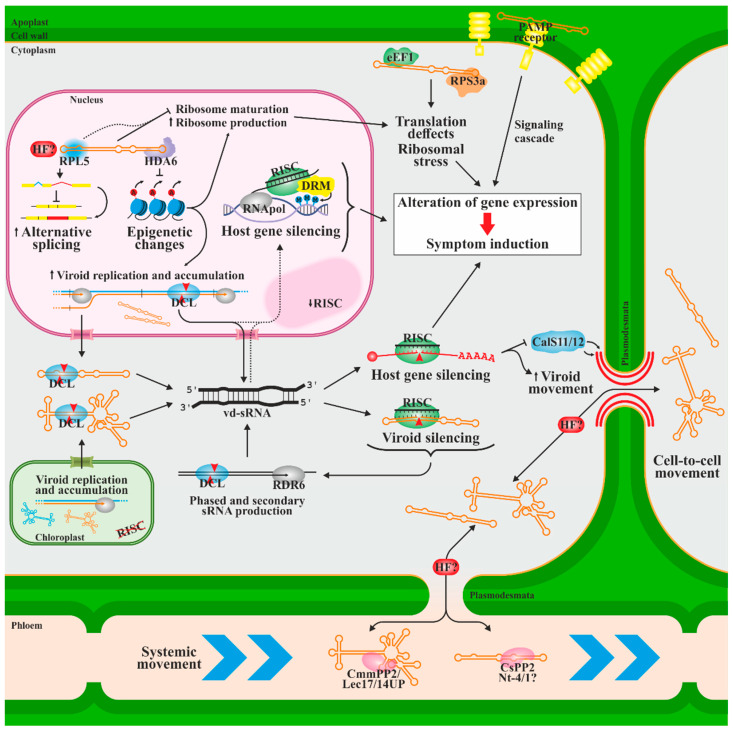Figure 3.
Proposed mechanisms of host defense responses, viroid pathogenesis and intercellular movement. Plant RNAi response is responsible for much of the viroid symptoms. dsRNA replicative intermediates and the cytoplasmic passage of viroids triggers the production of vd-sRNAs in plant cells. vd-sRNA-loaded RISC targets viroids and inhibits the expression of host genes containing complementary sequences post-transcriptionally by mRNA degradation and translation inhibition and possibly transcriptionally via RNA-directed DNA methylation. RDRs may transform sRNA fragments into additional DCL and RISC substrates. Viroid may also be recognized by cell membrane PAMP receptors stimulating plant innate immunity, resulting in the alteration of host gene expression. Additional interactions with proteins and host factors are responsible for global epigenetic changes, alternative splicing and interference with translational machinery, thus, are also involved in the development of symptoms. Viroids use plasmodesmata for proximal movement and phloem for systemic transport, likely interacting with specific (and in some cases unknown) host factors. RNAi response genes can increase intercellular movement. CalS11/CalS12, callose synthase 11 and 12, respectively; CmmPP2/Lec17/14UP, Cucumis melo phloem protein 2, phloem lectin 17 and uncharacterized protein of 14 kDa, respectively; DCL, Dicer-like protein; DRM, domains rearranged methylase; eEF1, eukaryotic elongation factor 1; HDA6, histone deacetylase; HF?, unknown host factor; Nt-4/1, Nicotiana tabacum 4/1 protein; PAMP, pathogen-associated molecular pattern; RISC, RNA-induced silencing complex; RDR6, RNA-dependent RNA polymerase 6; RNApol, RNA polymerase; RPL5, ribosomal protein L5; RPS3a, ribosomal protein S3a; and vd-sRNA, viroid-derived small RNAs.

